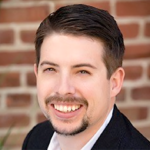In 2015, my sister Lauren and I took over AEC Living, which manages Elders Inn, an assisted living and memory care residence, and Waters Edge Lodge, an assisted living residence, from our parents, who had run the business for 40 years. As determined entrepreneurs, we began charting a course to expand our family’s business. We both agreed that growing the company had to be done in a smart, methodical and manageable way.
In the early days of managing our two properties, we discovered critical market needs — voids in services our clients needed but were not readily available from other vendors. We determined that if we could provide these services, then we could offer greater depth of care or complementary and necessary services along the continuum of care. Simultaneously, we could increase customer service and retention.
The key to our success has revolved around strategic investments we made along the continuum of care. We believed that investing in services that span all levels of care made more sense than simply taking a model we already knew and duplicating it somewhere else. We wanted to go deeper.
Attempting to duplicate an established model, for us, was tantamount to trying to catch lightning in a bottle. Oftentimes, people getting into this space don’t realize how long it takes to stabilize a community. What’s more, people fail to account for the sheer amount of time, energy and startup costs that are required to launch, run and maintain a senior living property.
One advantage my sister and I have over competitors is we grew up in the industry. This was our parents’ profession for 40 years. At the dinner table, work always was present. This interaction helped us with our entrepreneurial mindset.
For our parents, it was about business and caring for people who entrusted them with their lives. Today, Lauren and I now are caring for our parents, many of our friends’ parents, and those friends’ grandparents. In short, care is at the forefront of what we do. This foundation was the springboard for our ongoing entrepreneurial journey.
It’s about the continuum of care
Focusing on the continuum of care allowed us to emphasize the “care” portion of what we do. Our attention, however, always is focused on customer service and prolonging peoples’ independence, as opposed to trying to be a nursing home or, essentially, a long-term hospital. We want to keep people out of hospital-like settings. We want to be able to provide services and living environments for people aged 55 and older that support them and promote their highest level of independence.
Our father and mother relied on that philosophy when they built Waters Edge Lodge and Elder’s Inn. Continuing with that philosophy, when we were looking for our next project, we decided to build Phoenix Commons, a senior co-housing condominium community for those 55+. The community was built from the ground up for middle-aged and older adults who wanted a direct say in their community and the decision-making process.
One of the best things about this co-housing community is the way people connect with each other and develop and maintain their community. It brings joy and better health to them. There’s no reason empty-nesters, those soon to retire or those recently retired wouldn’t like the benefits of community living that was centered on their age range and provided them with the kind of camaraderie we saw residents at our assisted living residences enjoy.
After Phoenix Commons was built, we uncovered new service opportunities that fit into our continuum of care blueprint, but we needed to be fiscally prudent. This meant partnering with service organizations rather than investing our capital in entirely new businesses and trying to grow them from the ground up. As an example, we partner with hospice care providers, who work with us and families and residents to ensure communication and coordination across the continuum of care.
There are numerous advantages to partnering with other service organizations. For one, there’s someone to share the risk. If the partnership doesn’t work out, then it’s fairly easy to part ways, and no one loses everything as a result. A partner can help fill a gap in knowledge or expertise.
When partnerships in our area are unavailable, we’ll determine whether it makes sense to make an investment in that service and go it alone. And, of course, when we strike out on our own, we make sure doing so fits within our continuum-of-care business model.
Two areas where a partnership wasn’t feasible and we decided to launch new business units included the launch of AEC Home Care, a private duty, nonmedical, in-home care agency, and AES Therapy & Fitness, a wellness, rehabilitation and fitness center that was specially designed for older adults. Today, these new services provide additional revenue streams and are tightly integrated into our core living facilities.
In terms of what’s next for us, we’ll continue to evaluate new services opportunities that align to the continuum of care, partner with those organizations where it makes sense, and develop new business units when those partnerships aren’t available.




